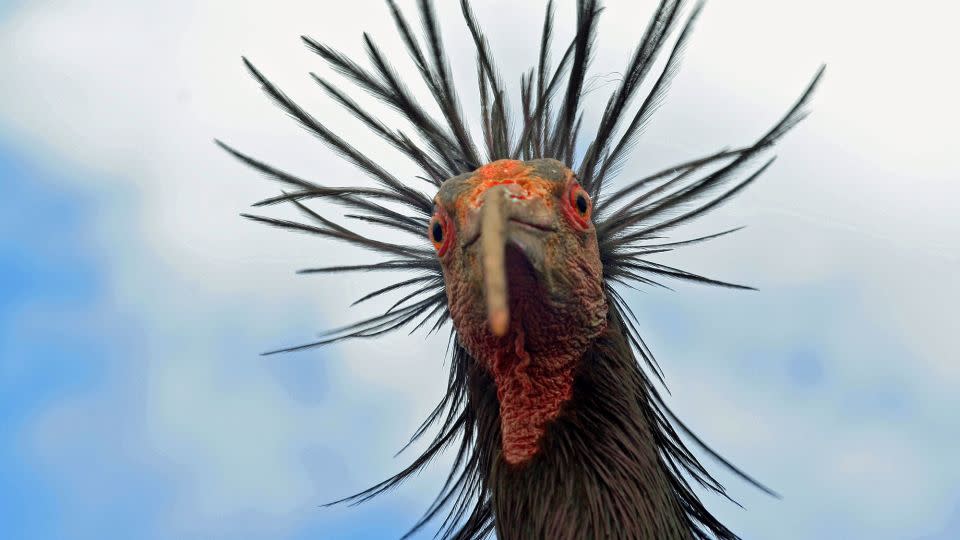Editor’s note: A version of this story appeared in CNN’s science newsletter Wonder Theory. To get it in your inbox, Register here for free.
“Jurassic Park” and its genetically modified dinosaur refugees are pure science fiction – that will never happen. But that doesn’t mean that scientists aren’t interested in bringing the past back to life in some form.
Projects to revive animals that have recently become extinct – the mammoth, the dodo and the Tasmanian tiger – are reaching a tipping point, although the aim is to create a hybrid approach to these creatures, rather than copies.
Researchers are also mining ancient DNA for a potential source of new molecular-based drugs. Still others are reviving historic plants to study their evolution and genetic diversity, which could one day help humans benefit from long-lost species with medicinal properties.
Dig that


In the 1980s, archaeologists unearthed a pristine seed in a cave in the Judean Desert. Decades later, Dr. Sarah Sallon, founder of the Louis L. Borick Natural Medicine Research Center in Jerusalem, assembled another study team to see what would happen.
To the researchers’ surprise, a tiny sprout appeared five weeks later, a fragment of which the scientists were able to date: the seed was an incredible 1,000 years old.
Remarkably, the tree thrived and is now 3 meters tall, although it never flowered or produced fruit.
Using DNA sequencing, researchers identified the mysterious tree as part of the genus Commiphora, but its exact species is unknown and likely extinct. The team believes there may be a connection to a medicinal plant mentioned in the Bible.
Once upon a time on a planet
Mount Everest rises more than 29,000 feet (8,850 meters) above sea level.
Its formation story began about 40 to 50 million years ago, when landmasses on two plates of the Earth’s crust – the Indian and Eurasian plates – collided in slow motion and crumpled the terrain, creating rocky peaks that over millions of years became the Himalayan Mountains became.
This ancient collision is still raising the Himalayas, but Everest is growing faster than expected – at a rate of about 0.08 inches (2 millimeters) per year, rather than the expected 0.04 inches (1 millimeters) per year.
According to recent research, this additional increase results from a recent geological event – an act of “river piracy”.
A long time ago


Archaeologists have unearthed a large Viking Age burial site in Åsum, Denmark, which was first discovered during work to renew the power grid.
The team unearthed more than 50 exceptionally well-preserved skeletons, including the remains of a woman buried in a cart with a glass bead necklace, an iron key and other beautiful objects.
Additionally, an elaborately decorated bronze brooch and artifacts from far beyond Denmark’s borders were discovered, suggesting that the Vikings traveled extensively for trade.
Scientists want to extract DNA from the remains to learn more about the people buried there and their relatives.
Trailblazer
Some of science’s brightest minds will be thrust from academic obscurity into the spotlight next week when the Nobel Prizes in physics, chemistry, physiology or medicine are announced.
Established by Swedish industrialist Alfred Nobel more than a century ago, the awards recognize transformative work, often created over decades.
It is notoriously difficult to predict who will win a Nobel Prize. The shortlist, like the nominators, remains secret, and documents revealing the details of the selection process will be kept secret from the public for 50 years.
But there’s no shortage of Nobel-worthy discoveries: Here are five life-changing breakthroughs that haven’t won a prize—at least not yet.
Fantastic creatures


Once common on three continents, the wood ribbis was one of the rarest birds in the world in the 1990s. By then, hunting, habitat loss and pesticide use reduced the species’ global population in the wild to just 59 pairs – all in Morocco.
Today, the population has grown to over 500 through persistent conservation efforts, leading to the International Union for Conservation of Nature’s Red List of Threatened Species changing the birds’ status from “critically endangered” to “endangered” in 2018.
Thanks to a reintroduction program, the distinctive birds are back in transit in Europe for the first time since the 17th century, with a managed population of around 270 birds.
However, the ibises bred in the zoo initially didn’t know where to go. Austrian biologist Johannes Fritz, who leads the conservation and research group Waldrappteam, came up with an ingenious solution in which he personally taught the trail by leading the herd in an ultralight aircraft.
Explorations
Take your time for this amazing read:
— Voyager 2 is a scientific instrument, but not out of service. NASA hopes the 47-year-old spacecraft will continue operating into the 2030s.
– Underwater investigators found the wreckage of a U.S. Navy destroyer known as the “Ghost Ship of the Pacific” and said it was in “exceptional” condition.
— When a massive asteroid impact wiped out the dinosaurs 66 million years ago, ants began cultivating a food source that subsequently became widely available.
— Admire these stunning images of this week’s annular solar eclipse and find out what chance you’ll have to witness a solar event next.
Did you like what you read? Oh, but there’s more. Register here to receive the next edition of Wonder Theory, presented by CNN Space and Science writers, in your inbox Ashley Strickland And Katie Hunt. You’ll find wonders on planets beyond our solar system and discoveries from ancient times.
For more CNN news and newsletters, create an account at CNN.com

